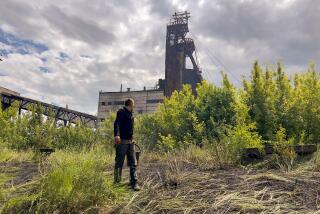U.N. expresses growing concern over minefields
ISLAMABAD, Pakistan — The four Afghan civilians killed in a U.S. bombing raid Tuesday worked with OMAR, the Organization for Mine Clearance and Afghan Rehabilitation, a U.N.-affiliated agency that has operated in Afghanistan since 1990 and was one of the last U.N.-related agencies still functioning there.
The four men were on overnight duty to guard de-mining and communications equipment, computers, cars and an ambulance. At least three of them were believed to be asleep when the bomb hit.
U.N. officials have expressed growing fear that an exodus of refugees escaping the air raids and expected battles between the Taliban and their opposition Northern Alliance would become casualties of the minefields left by the Afghan War against a Soviet invasion in the 1980s.
During the past decade, U.N. organizations have defused or exploded 650,000 mines in Afghanistan. But experts estimate some 5 million to 7 million mines remain in Afghanistan. Locating them is a daunting task. Many minefields have never been detected or surveyed, said Karim Fazal, director of the mine-removal agency.
In addition, U.N. officials estimate that 10 percent to 20 percent of devices dropped by the U.S.-led coalition will not explode, adding more peril for the population.
“The nightmare scenario is that refugees escaping from the bombings will rush into open areas and be killed in un-chartered minefields,” said Fazal.
He said nongovernment organizations had also appealed for an end to the current humanitarian food drops by coalition aircraft. Some aid packages intended to feed Afghans escaping from the bombings had fallen into minefields. People reportedly had rushed into the fields to retrieve them and were blown up.
More to Read
Sign up for Essential California
The most important California stories and recommendations in your inbox every morning.
You may occasionally receive promotional content from the Los Angeles Times.










